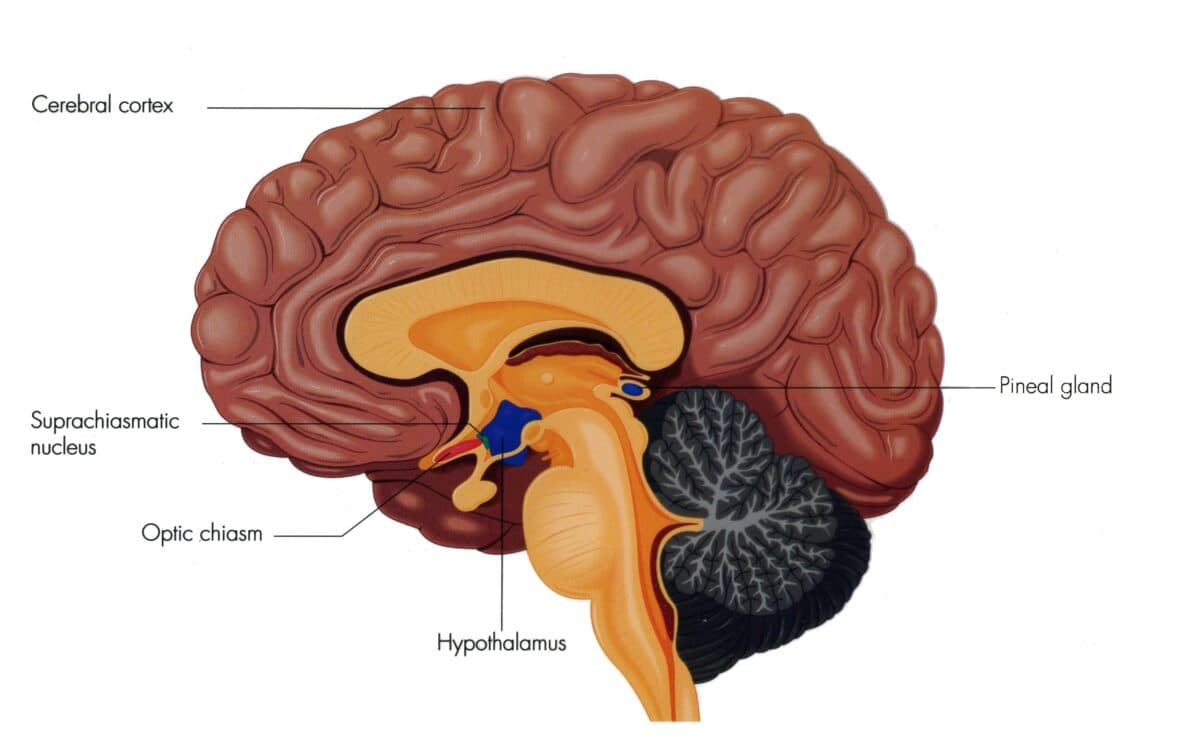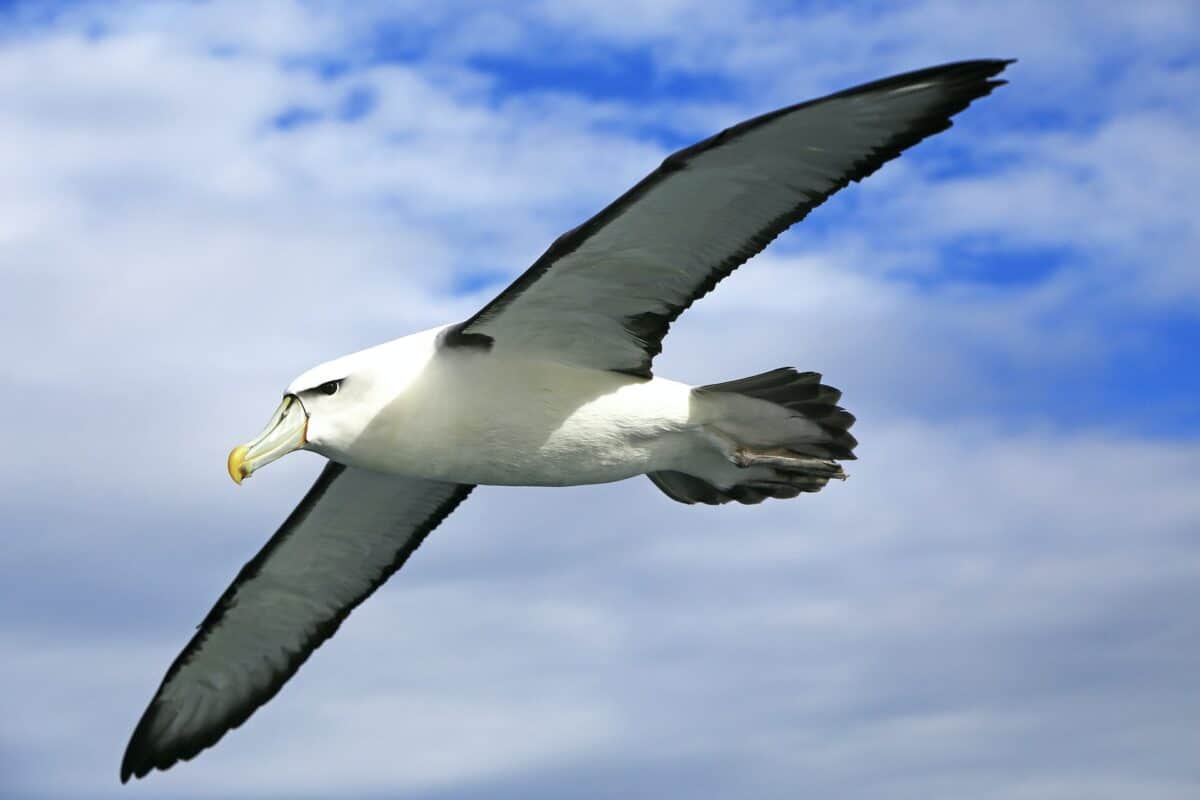In the vast expanse of our planet’s skies, birds have evolved some of the most remarkable adaptations in the animal kingdom. Perhaps none is more astonishing than their ability to sleep while flying—a skill that seems to defy the very laws of nature. This aerial slumber, technically known as unihemispheric slow-wave sleep, represents one of evolution’s most extraordinary solutions to the challenge of long-distance migration and survival in challenging environments. While mammals, including humans, require complete unconsciousness for restorative sleep, certain bird species have developed the remarkable capacity to rest one half of their brain while the other half remains alert, allowing them to maintain flight for days or even months without touching land. This article explores the fascinating world of avian sleep patterns in flight, examining how birds achieve this seemingly impossible feat, which species possess this ability, and what this tells us about the evolution of sleep itself.
The Science of Sleep in Birds
Birds, like all animals, require sleep for survival. However, their sleep patterns differ significantly from mammals. Unlike humans who cycle through distinct stages of sleep including REM (rapid eye movement) and non-REM phases, birds experience two primary sleep states: slow-wave sleep (SWS) and REM sleep. During slow-wave sleep, brain activity slows down, allowing for physical restoration. REM sleep, characterized by rapid eye movements and increased brain activity, is associated with memory consolidation and cognitive processing. What makes bird sleep truly remarkable is their ability to engage in unihemispheric slow-wave sleep (USWS), where one brain hemisphere sleeps while the other remains awake and alert. This adaptation allows birds to monitor their environment for predators and maintain essential functions like flight or floating while still obtaining necessary rest. Electroencephalogram (EEG) studies have confirmed this phenomenon, showing asymmetrical slow-wave activity between the two brain hemispheres during USWS episodes.
Unihemispheric Sleep: The Key to Aerial Slumber

Unihemispheric slow-wave sleep represents one of nature’s most ingenious adaptations. During this state, birds can rest one cerebral hemisphere while keeping the other active—effectively sleeping with one half of their brain while the other half remains vigilant. This remarkable ability results from the unusual structure of the avian brain, which features greater independence between hemispheres compared to mammals. When a bird engages in unihemispheric sleep, the eye connected to the awake hemisphere remains open, scanning for potential threats, while the eye connected to the sleeping hemisphere closes. The corpus callosum, which connects the brain hemispheres, is less developed in birds than in mammals, allowing for this hemispheric independence. Research has shown that birds can control which hemisphere sleeps, typically alternating between them to ensure both sides receive adequate rest. This adaptation enables birds to maintain continuous flight during long migrations while still meeting their physiological need for sleep.
The Epic Journey of the Swift: Record-Breaking Aerial Sleep

The common swift (Apus apus) stands as perhaps the most impressive practitioner of aerial sleep, with research confirming these remarkable birds can remain airborne for up to ten consecutive months. A groundbreaking 2016 study published in the journal Current Biology tracked swifts using lightweight accelerometers and found that some individuals did not land once during this extended period—eating, drinking, mating, and sleeping entirely on the wing. During their non-breeding season, these birds fly from Europe to sub-Saharan Africa and back, covering thousands of miles without touching down. Researchers believe swifts sleep while gliding on thermal currents, using unihemispheric sleep to maintain altitude and navigation. Their bodies have evolved for this aerial lifestyle, with extremely efficient metabolisms, specialized wing structures, and the ability to process food and water from the insects they catch mid-flight. The swift’s ability to sleep while flying represents one of the most extreme adaptations in the avian world, allowing these birds to spend over 99% of their non-breeding lives in continuous flight.
Frigate Birds: Masters of Marine Navigation During Sleep

Frigate birds (family Fregatidae) present another fascinating example of aerial sleep adaptation. These seabirds, with their distinctive forked tails and massive wingspans of up to 2.3 meters, can stay aloft for up to two months during transoceanic flights. A 2016 study by researchers from the Max Planck Institute attached small electroencephalogram devices to great frigate birds (Fregata minor) in the Galapagos Islands, providing the first direct neurological evidence of sleep during flight. The data revealed that frigate birds sleep for approximately 42 minutes per day while flying, dramatically less than the 12 hours they sleep while on land. Moreover, these birds typically sleep in short bursts of about 12 seconds at a time, often using both hemispheres simultaneously—a behavior rarely observed in birds on land. Remarkably, frigate birds can even enter brief periods of REM sleep while maintaining flight. Their ability to navigate complex aerial currents over open ocean while partially asleep demonstrates the remarkable precision of their autopilot capabilities, as they can ascend thermals and maintain flight patterns even with significantly reduced consciousness.
Migratory Birds and Sleep Deprivation Strategies

Long-distance migratory birds face an extraordinary challenge: how to cover thousands of miles while still obtaining enough sleep to function. Research has revealed several strategies these birds employ to manage sleep during migration. Some species, like the white-crowned sparrow (Zonotrichia leucophrys), appear to reduce their total sleep requirements during migration periods, demonstrating a remarkable ability to function normally despite significant sleep reduction. Studies show these sparrows can remain alert and perform complex tasks despite sleeping approximately two-thirds less during migration periods. Other species, like the great frigatebird and alpine swift, utilize unihemispheric sleep while flying over oceans or inhospitable terrain where landing is impossible. Many migratory species adopt a strategy of intermittent flight, alternating between periods of intense flying and stopover rest periods, during which they may experience “rebound sleep”—sleeping longer and more deeply to compensate for sleep debt accumulated during flight. Scientists believe these adaptations may involve seasonal changes in brain chemistry, particularly involving neurotransmitters that regulate sleep and wakefulness cycles.
Mallards and Ducks: The Edge-of-Group Vigilance

While not known for extended flight during sleep, mallards and other duck species provide important insights into the evolution of unihemispheric sleep in birds. Research has shown that when mallards (Anas platyrhynchos) sleep in groups, individuals positioned at the edge of the flock exhibit more pronounced unihemispheric sleep patterns than those in the center. Ducks at the perimeter typically keep the eye facing outward from the group open, with the corresponding brain hemisphere remaining more alert. This adaptation represents a fascinating trade-off between rest and vigilance, suggesting that unihemispheric sleep evolved primarily as a predator detection mechanism rather than specifically for flight. Studies using EEG measurements have confirmed that the hemisphere corresponding to the open eye shows significantly reduced slow-wave activity compared to the hemisphere connected to the closed eye. This behavior is dynamic—when researchers experimentally rearranged sleeping groups, ducks adjusted their sleeping patterns based on their new position within the flock. This edge-of-group vigilance provides compelling evidence that unihemispheric sleep began as an anti-predator adaptation that was later co-opted for use during flight in certain species.
The Neurological Basis of Bird Sleep

The neurological mechanisms enabling birds to sleep while flying involve specialized brain structures and neural pathways. The avian brain differs significantly from mammalian brains, particularly in the organization of sleep-regulating centers. The suprachiasmatic nucleus (SCN), which functions as the body’s master clock, operates differently in birds, allowing for more flexible sleep-wake cycles. Additionally, birds possess specialized neurons in the locus coeruleus and raphe nuclei that can modulate alertness in each hemisphere independently. Research has identified asymmetrical activation of the thalamic gates that control sensory input to each hemisphere during unihemispheric sleep. When one hemisphere sleeps, the corresponding thalamic gate reduces sensory information to that side of the brain, while the gate for the awake hemisphere remains open. Neurochemically, birds show hemisphere-specific differences in neurotransmitter release during unihemispheric sleep, with acetylcholine and serotonin levels varying between the sleeping and wakeful hemispheres. This neurological infrastructure provides birds with unprecedented control over their sleep states, enabling them to adapt their rest patterns to environmental demands and migration requirements.
Marine Mammals: Parallel Evolution of Unihemispheric Sleep

Interestingly, birds are not the only animals to have evolved unihemispheric sleep. Certain marine mammals, including dolphins, porpoises, and some seal species, have independently developed this same adaptation, providing a fascinating example of convergent evolution. For aquatic mammals, unihemispheric sleep solves the critical problem of breathing while sleeping in water. Dolphins, for instance, must consciously surface to breathe, a behavior incompatible with full unconsciousness. Research has documented that bottlenose dolphins (Tursiops truncatus) typically sleep with one eye open, much like birds, with the corresponding brain hemisphere showing wakefulness patterns while the other exhibits slow-wave sleep characteristics. This parallel evolution of unihemispheric sleep across different animal groups that face similar environmental pressures—birds needing to maintain flight and marine mammals needing to surface for air—highlights how similar survival challenges can drive the development of nearly identical adaptations in distantly related species. The neurological mechanisms underlying unihemispheric sleep in marine mammals are remarkably similar to those observed in birds, despite these groups having diverged from common ancestors hundreds of millions of years ago.
Sleep Migration in Alpine Swifts

The alpine swift (Tachymarptis melba) provides another striking example of aerial sleep capabilities. These birds, slightly larger than common swifts, undertake migrations between Europe and Africa that can involve more than six months of continuous flight. A 2013 study using lightweight accelerometers attached to six alpine swifts recorded their movements for a 200-day period. The data revealed that these birds remained continuously airborne for periods exceeding 200 days, with movement patterns strongly suggesting they were sleeping during flight. During nighttime hours, the birds’ flight patterns showed characteristic gliding periods consistent with sleep behavior, while maintaining enough awareness to adjust for changing air currents and navigation requirements. Alpine swifts feed exclusively on airborne insects captured in flight, and they can drink by skimming water surfaces without landing. Their physiological adaptations include extremely efficient respiratory and circulatory systems that maximize oxygen uptake during flight, as well as specialized wing structures that allow for extended gliding with minimal energy expenditure. These adaptations, combined with their unihemispheric sleep capability, make alpine swifts among the most aerially adapted birds on the planet.
The Evolutionary Advantage of Aerial Sleep

The ability to sleep while flying represents a significant evolutionary advantage for certain bird species, particularly those that migrate long distances or inhabit environments where landing presents dangers. For oceanic birds like frigatebirds and albatrosses, unihemispheric sleep allows them to remain aloft over vast stretches of ocean where landing would mean certain death due to their inability to take off from water (in the case of frigatebirds) or vulnerability to predators. For migratory species, aerial sleep enables non-stop travel over inhospitable terrain such as deserts, mountains, or large bodies of water, significantly reducing migration time and energy expenditure. This adaptation also minimizes exposure to ground predators during vulnerable resting periods. From an evolutionary perspective, unihemispheric sleep likely began as a vigilance mechanism against predators, similar to what we observe in ducks today, and was later adapted for flight in certain lineages. This capacity may have been crucial in allowing birds to expand their ranges and exploit ecological niches unavailable to other animals. The considerable metabolic and neurological investment required to develop this adaptation suggests that the survival benefits must be substantial, reinforcing its evolutionary significance.
Measuring Bird Sleep: Research Challenges

Studying sleep in flying birds presents extraordinary scientific challenges. Traditional sleep monitoring requires electroencephalogram (EEG) equipment that has historically been too heavy for birds to carry in flight without affecting their behavior. Recent technological advances, however, have enabled researchers to develop increasingly miniaturized neurological monitoring devices. A breakthrough came with the development of lightweight accelerometers weighing less than 1 gram, which can record fine-scale movement patterns indicative of sleep versus wakefulness. More recently, researchers have created miniaturized EEG devices weighing under 3 grams that can directly measure brain activity in flight. These technologies must be carefully attached to minimize impact on the bird’s aerodynamics and behavior. Remote monitoring presents additional challenges, as data typically cannot be transmitted continuously due to weight constraints of battery and transmission equipment. Consequently, researchers often rely on data logging systems that must be retrieved when birds return from migration. Ethical considerations also constrain research, as studies must be designed to ensure bird welfare and natural behavior. Despite these challenges, continued technological innovation is rapidly expanding our understanding of this fascinating biological phenomenon.
Sleep Deprivation and Bird Health

While birds have evolved remarkable adaptations for sleeping while flying, research indicates they still experience physiological consequences from reduced sleep during long migratory periods. Studies on white-crowned sparrows and other migratory species show that despite their ability to function with significantly less sleep during migration, these birds exhibit measurable changes in immune function, cognitive performance, and stress hormone levels. Migration periods are energetically demanding times when birds are already pushing physiological limits, making the additional challenge of sleep reduction particularly significant. Research has documented that birds typically experience “rebound sleep” following migration, sleeping longer and more deeply upon reaching their destination. This suggests a sleep debt accumulates despite their adaptations. Some species appear to compensate through micro-naps—brief sleep episodes lasting just seconds that occur frequently throughout the day. Birds that engage in unihemispheric sleep during flight may also alternate which hemisphere sleeps more frequently than birds resting on land, ensuring both sides of the brain receive adequate, if distributed, rest. These findings highlight the continued importance of sleep for avian health, even in species with the most advanced sleep adaptations.
The ability of birds to sleep while flying stands as one of nature’s most remarkable adaptations, representing an evolutionary solution to the competing demands of rest and survival. Through unihemispheric slow-wave sleep, species like frigate birds, swifts, and albatrosses have conquered the challenge of obtaining necessary neural rest while maintaining the continuous flight required for migration or life over open oceans. This adaptation underscores the extraordinary plasticity of sleep in the animal kingdom, challenging our traditional understanding of sleep as an all-or-nothing state requiring complete unconsciousness. As research technologies continue to advance, scientists are uncovering increasingly detailed information about the neurological mechanisms and environmental pressures that have shaped these remarkable sleep strategies. Beyond their scientific significance, these aerial sleep capabilities inspire wonder at the extraordinary adaptability of life and the remarkable solutions that evolution can produce when faced with seemingly insurmountable challenges. The bird sleeping peacefully while soaring through the night sky reminds us that even the most fundamental biological necessities can be reimagined through the persistent force of natural selection.
- How Animal Mothers Prepare Their Young for Independence - August 23, 2025
- The Last Surviving Megafauna That Still Roam the Earth - August 23, 2025
- The Fish That Builds Nests - August 23, 2025

